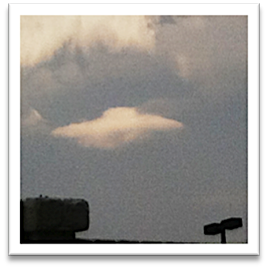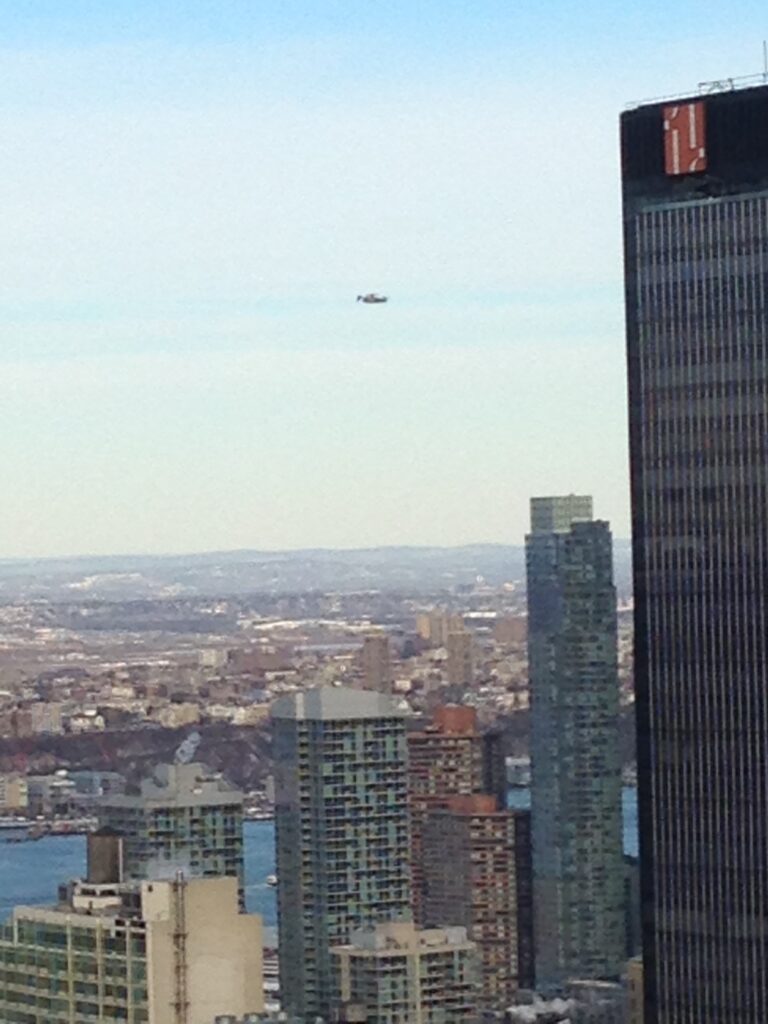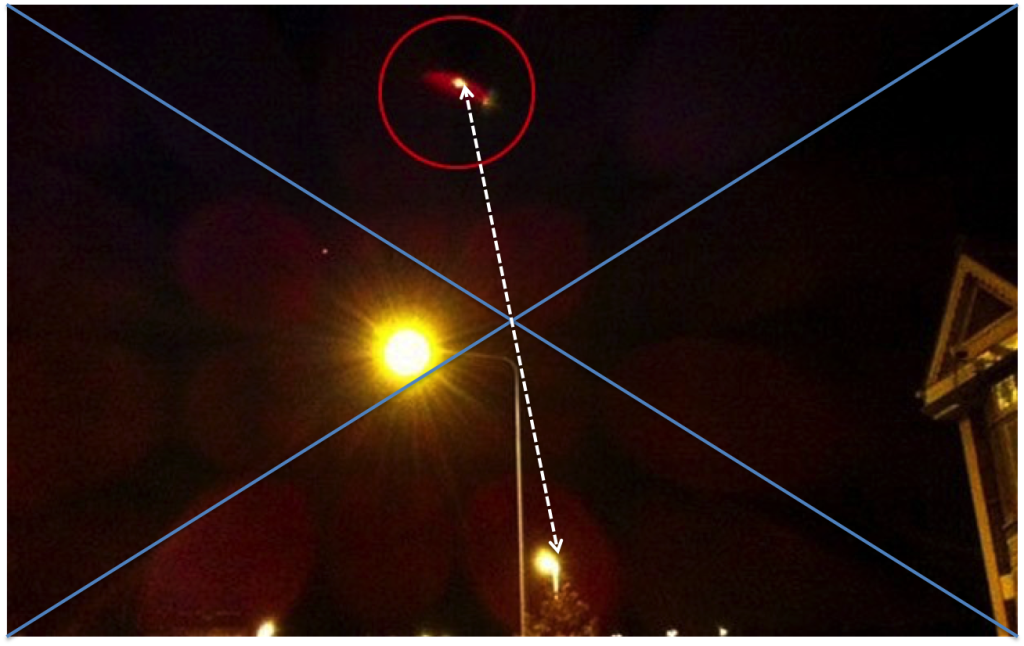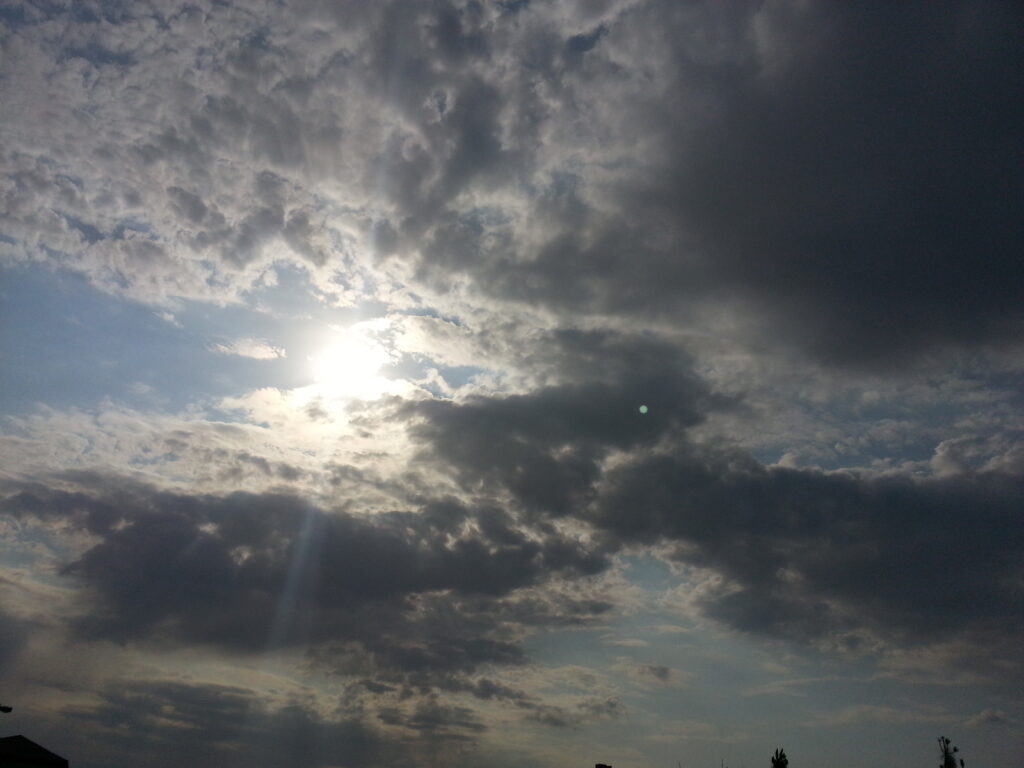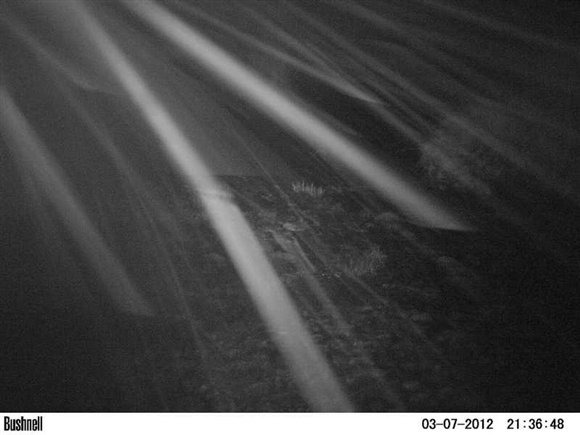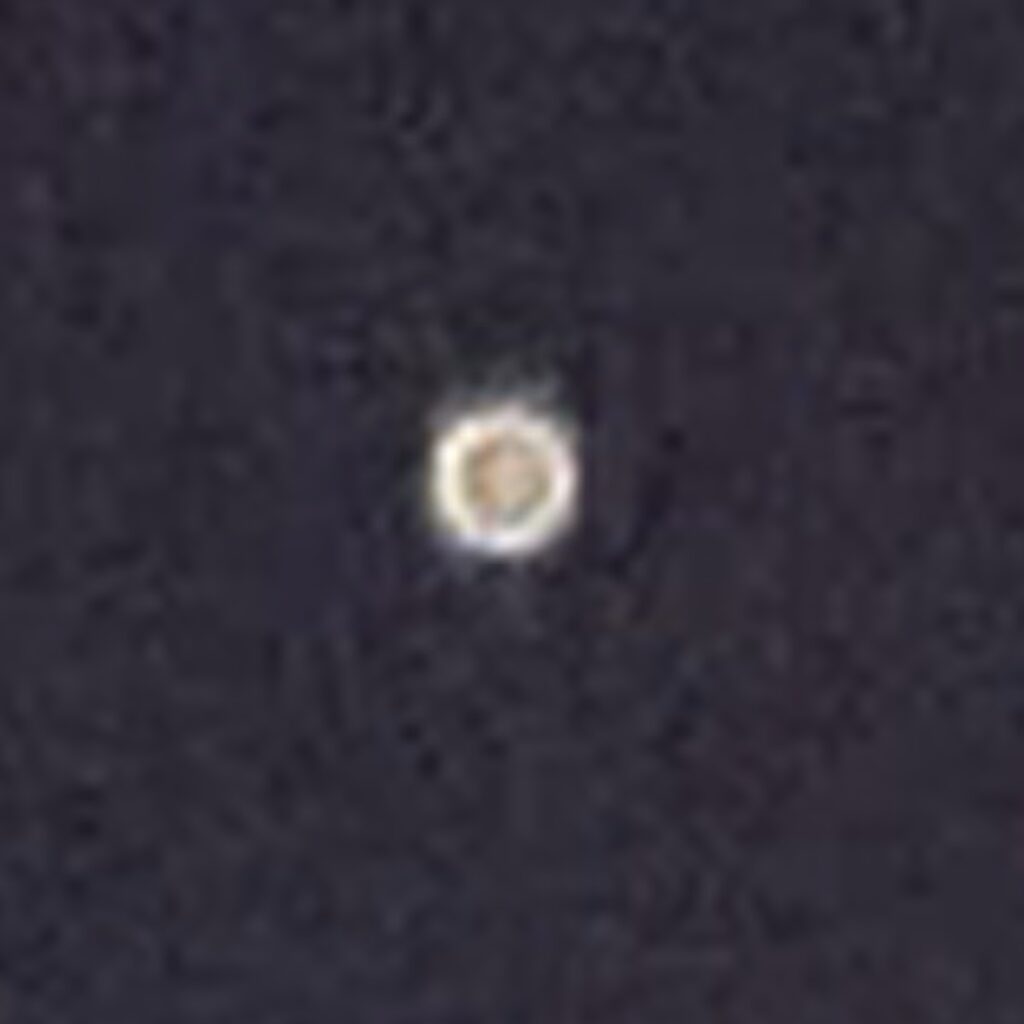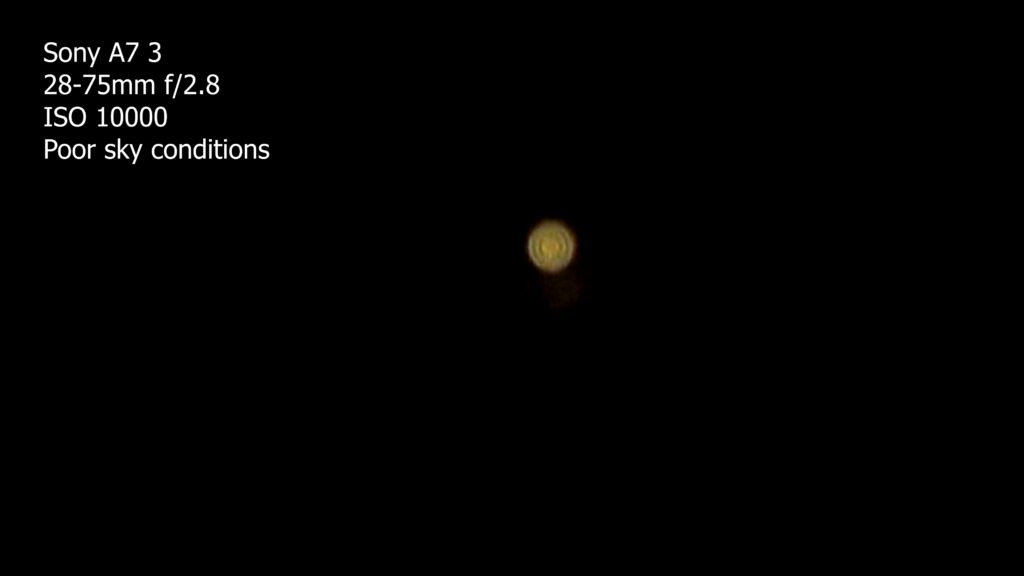Last updated: 1 May 2025
Our experience investigating cases has taught us that the majority of the objects reported to us are identifiable – IFOs, not UFOs. A second category of low strangeness object might be identifiable, but we just don’t have enough reliable information to make that identification.
While we don’t take the position that all reports could be identified if there was enough information, it would be helpful to everyone if the types of commonly reported but identified objects were more widely known, so that at least some of the time, members of the public can solve their own case. Towards that purpose, we here present a list of these objects and anomalies, with many examples from our own case files.
Table of Contents
- Daylight Objects
- Nighttime Objects
- Flares
- LED Kites
- Sky Lanterns (aka Chinese Lanterns)
- Dust Orbs
- Rockets
- Geese
- Aircraft and quadcopter lights
- Satellites
- Stars and Planets
- Meteors
- Out of focus lights
- Objects reported both night and day
Common Daylight Objects
Daylight objects are not as common as nighttime objects, since it is possible to see more detail and make an identification right away. However, we do get reports of daylight phenomena, some of which are only seen on photographs or video and not in real time.
Contrails and Clouds
Contrails are a human made cloud that sometimes stimulate UFO reports. They are often mistakenly called “chemtrails”, but contrails are overwhelmingly composed of frozen water vapor condensed around aircraft exhaust aerosols. On any clear day in most parts of the world you can step outside and see a few contrails. They can be seen at night as well if illuminated by moonlight. Contrails can even cast shadows on clouds or on each other. Contrails always form at higher altitudes, since the air must be very cold for the ice crystals to form.
Contrails can be short and disappear quickly, or they can be long and persistent, depending on the altitude of the aircraft and and the atmospheric conditions.
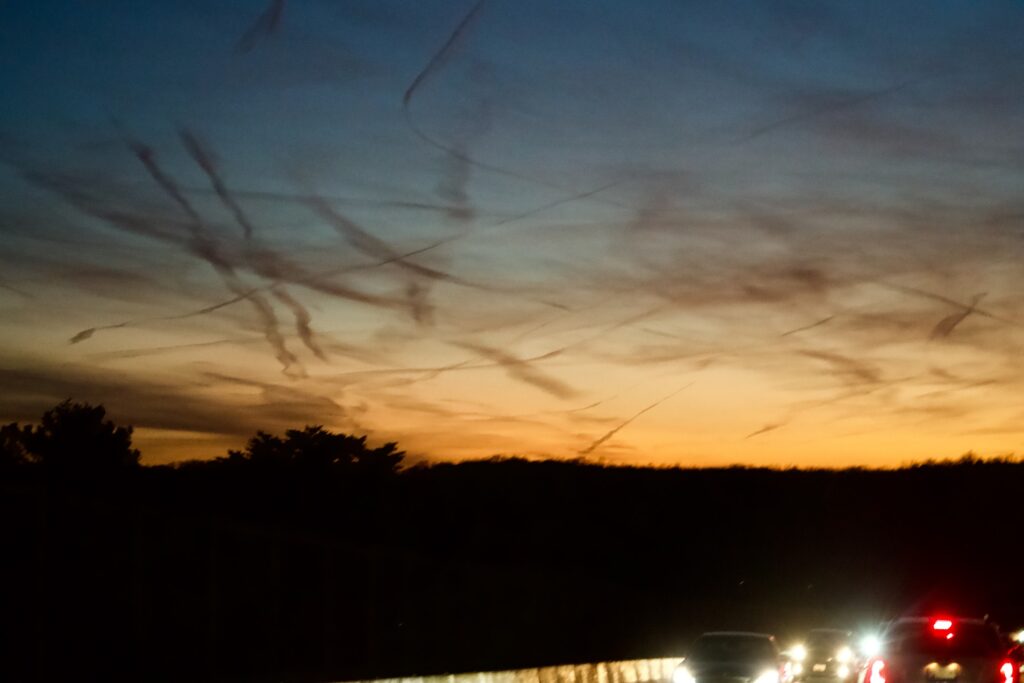 Contrails near Patuxent River NAS in Southern Maryland
Contrails near Patuxent River NAS in Southern Maryland
Persistent contrails can exhibit distortions and breaks, like this one:
With the right geometry and lighting conditions, contrails can appear to be moving almost straight up or down, when in fact the aircraft forming the contrail is moving toward or away from the observer. This is what was observed in Case 13-009.
Here’s a French language site with many more good contrail photos.
Natural clouds can often take on an unusual appearance that can cause UFO reports. Case 12-055 was identified as a cloud.
An unusually fine example of a lenticular cloud photographed by Mr,W5er 3nee :
Here is a lenticular cloud photographed in Utah that might be misinterpreted as a mothership: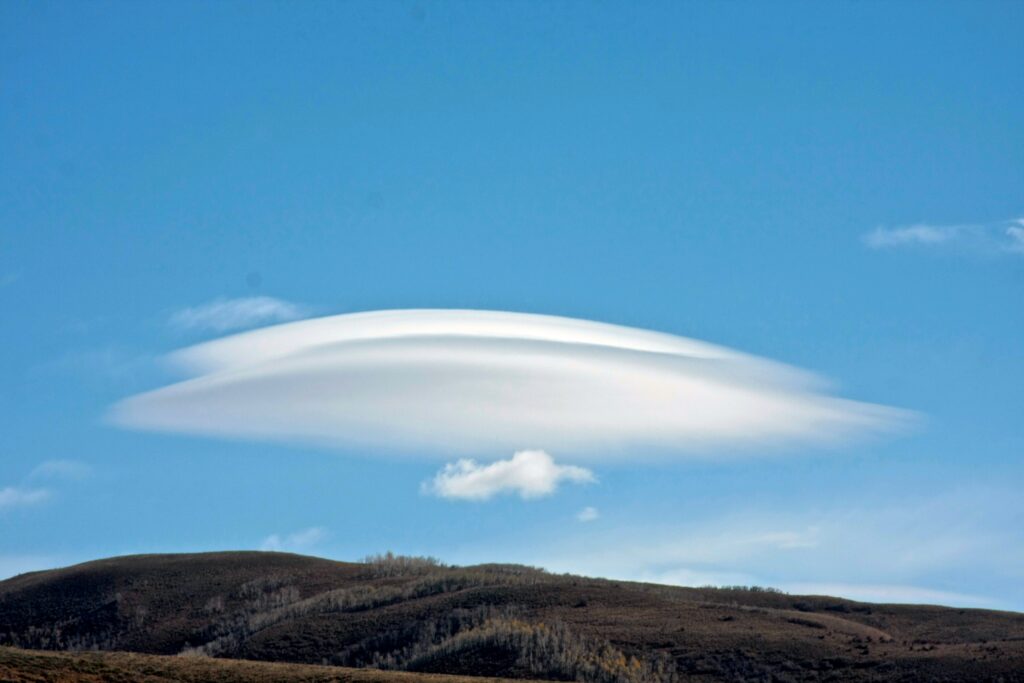
Bugs and Birds
Flying animals like birds, bats or insects are often mistaken for UFOs when seen in still photographs or security camera videos. The photographer took no notice of them when snapping the scene initially. There is often the perceptual illusion that the animal is much further away than it actually is, and problems with focus or motion blur make the animal’s shape difficult to discern. In other cases, the animals are fairly distant, and so none of their features can be made out. We have received many such photos and videos over the years.
”Rods” are typically insects flying past the camera at close range. Because they are moving fast with respect to the shutter speed or strobe duration, they will appear elongated. We used to hear quite a bit about rods until the larger community began to understand what they were.
Case 13-026 was very likely a bird, and is typical of this sort of photographic case.
Case 22-051 was identified as a flock of birds.
In Case 21-032 (France), the objects seen zipping through the frame in the video were identified as birds.
The object photographed in Case 12-020 was identified as a spider web.
Balloons and Blimps
Balloons are seen at every altitude, and the range of sizes and colors is large. One thing most balloons have in common is that they move with the wind, although some have propellers or tethers. Also, keep in mind that the winds at altitude are not the same as winds aloft.
Objects that appear to be sparkling or twinkling in the sun are often the popular Mylar party balloons, often in bundles of two or more balloons. This video from Sevilla, Spain is a good example:
Ordinary rubber balloons can stimulate UFO reports as well, as in case 21-006 (Maryland).
Very dark objects – usually of a slender cylindrical shape – are often identifiable as solar balloons, which use the sun’s light to heat up the air inside, causing the object to expand and rise slowly. The best time to fly a solar balloon is on a cool but sunny day. Solar balloons are cheap and widespread and are frequently reported as UFOs.
We think that our Case 13-070 (Colorado) was most likely a pyramidal shape solar balloon.
Blimps and aerostats are generally used primarily for advertising, although some are used for radar or other surveillance applications. These are very large, slow moving and stick to lower altitudes. At night the lights of advertising blimps can appear anomalous at first glance. In case 22-058, the reported object was identified as an aerostat blimp operated by the border patrol.
Case 11-009 (Maryland) turned out to be a blimp with an unusual shape.

Case 12-076 (California) was identified as a helium balloon

Case 12-076 photograph
High altitude balloons are surprisingly common, and these range from small amateur balloons to weather radiosondes to large professional scientific balloons. Most are not equipped with ADS-B transmitters, so can’t be identified on websites like flightradar24.com. High altitude balloons are difficult to see, but if the sun is hitting them just right, they can be visible to the naked eye. One example of an identified high altitude balloon from our case files is case 16-042 from Colorado. Here is the video summary for that case:
Balloons are rarely seen at night, although some radiosondes do have an anti-collision strobe for use on ascent and descent. Sky lanterns are usually seen at night or twilight and are discussed below under nightime objects.
Aircraft
When viewed side on at a distance, an aircraft may not appear to exhibit such details as a tail or wings. Atmospheric haze may contribute to the lack of discernible features, causing the aircraft to look like a cylinder, or “tic-tac.” A cell phone photo or video is unlikely to improve this because of unspectacular contrast transfer. The easiest way to resolve in real time if what you are seeing is an aircraft is with a flight tracking app like flightradar24 or a pair of binoculars. Note, however, that not all aircraft will appear on flight tracking apps.
A good example of a daytime misidentification of an aircraft is Case 21-040 (UK).
The object photographed in Case 12-038 was identified as a conventional aircraft.
The object in Case 22-043 was identified as an aircraft, although we don’t have a photo or video.
The object in Case 22-023 (California) was identified as an aircraft.
Case 14-019 was identified as an aircraft.
Common Nighttime Objects
Many objects seen at night are hard to identify because normally all we can see are lights.
Flares
Most flares reported as UFOs are dropped from aircraft, but can also be carried aloft by balloons, rockets, or fired from artillery. Most flares are very bright and can be seen from a considerable distance on a clear night. When dropped by planes, the flares are usually rigged with parachutes so that they fall more slowly. They typically appear as multiple points of red-orange light, although they can be other colors. Flares can be used for signaling, illumination, as training targets, or are simply for display. Display flares will often exhibit long luminous tails for visual effect.
Some military flares last for several minutes, but others just provide illumination for a shorter duration. Here is a video of typical military flares:
A famous hoax in New Jersey in 2009 used ordinary road flares attached to balloons.
Groups of parachutists equipped with flares are well known, and there are many videos available. These usually look much different than military flares.
LED Kites
Illuminated kites are becoming more common, and are very impressive to watch. We don’t have many reports of these, but we expect we’ll see more in the future.
Sky Lanterns
Sky lanterns, aka Chinese Lanterns or fire lanterns, are small hot air balloons. Sky lanterns account for many of our reports of slow moving faintly luminous objects at night. The light and heat source is usually a wax candle, so is often seen to flicker. They are usually seen in multiples, and they move with the wind. They are often considerably closer or farther away than the witness will estimate.
We have videos of identified sky lanterns:
Reflections are responsible for many reports, even though they are not really flying objects at all. We’ve all seen lights that appeared to be outside a window, only to quickly discover that it is a reflection of a light inside. Sometimes reflections end up on photographs or videos and can be perplexing at first.
The most common type of reflection reported is the lens flare. Lens flares are caused by light from a bright source in the frame reflecting off the surfaces of the camera lens elements, so they are never seen in real time wit the naked eye. Lens flares typically appear as bright colored circles, although they may be other shapes. The color and size of the flares will depend on the lens coatings and lens design, and vary widely. Some lenses have many elements, so these reflections can be complex, but generally they will intercept the sensor in the plane defined by the line of sight and the line to the bright source.
Modern lenses have features that make them more resistant to flaring, but still you can get almost any lens to flare under the right conditions. Since most cell phones have relatively simple and cheap lenses, flares are still commonly observed in cell phone photos or videos.
To analyze a lens flare photo, make sure you have the original, uncropped image. Identify the bright source (street lights, flood lights, the moon, etc.) and then draw a line from the center of the source to the center of the flare. the line should pass through the center of image. Note that the flare is not necessarily the same color or shape as the light source. In the illustration below, we see a “flying saucer” lens flare and a bright street lamp in the uncropped image. The line between the source and flare passes right through the center of the frame.
Case 13-049 was a very common sort of lens flare, often reported as an “orb”:
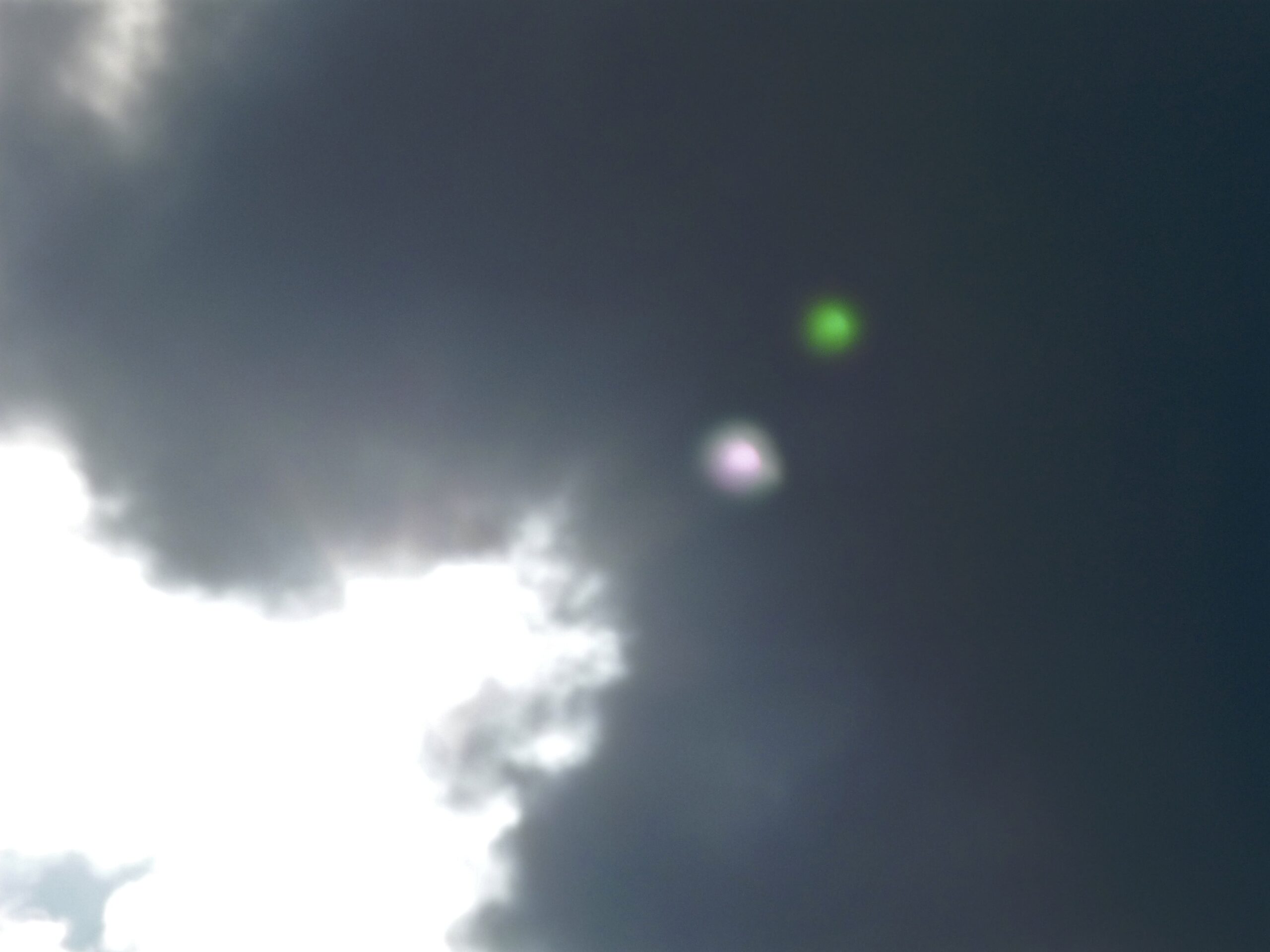
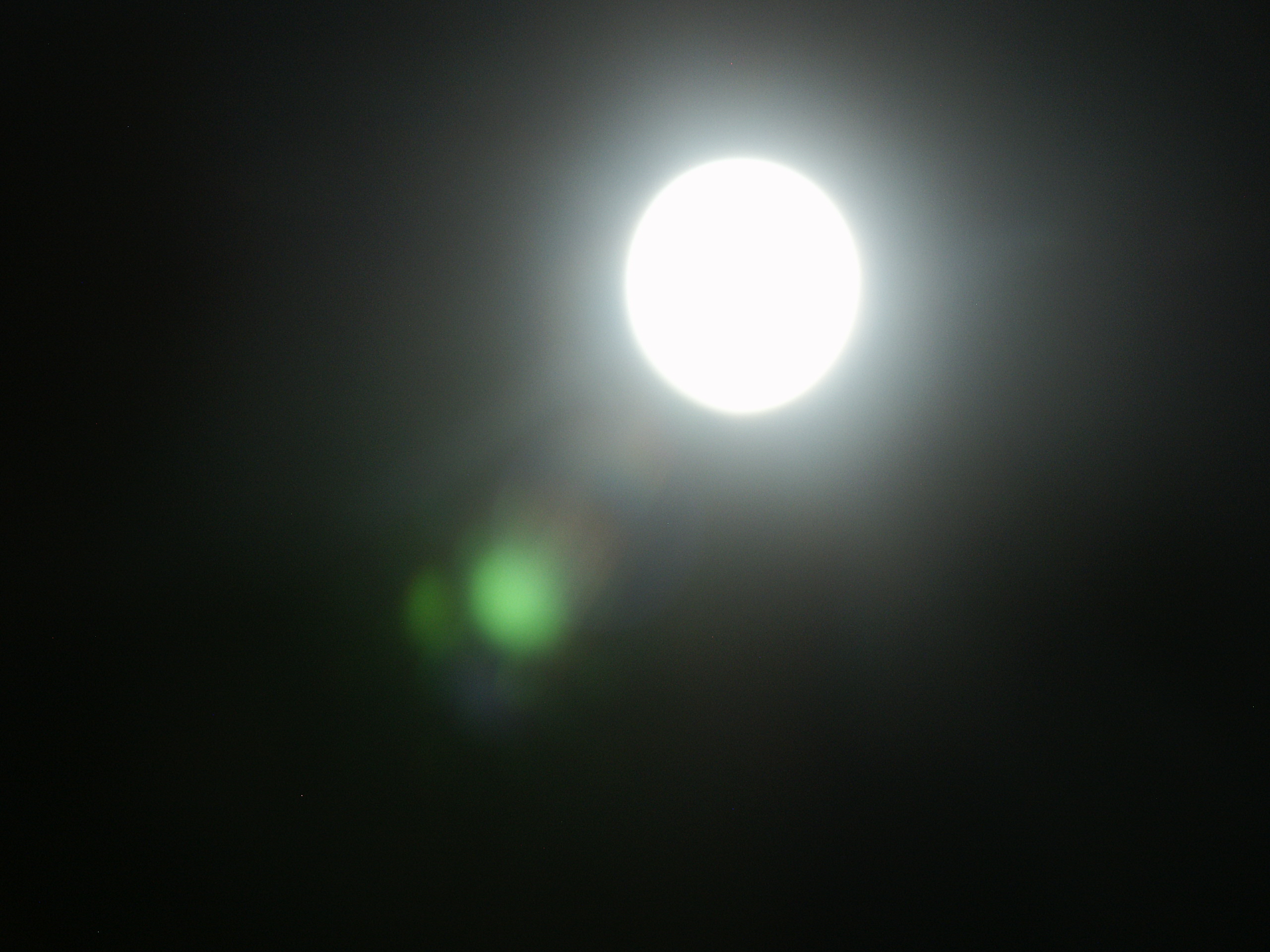

Case 22-016 was Identified as multiple lens flares. Here is the case summary video:
In addition to lens flares, reflections are sometimes seen and photographed in windows or windshields. We still get these reports occasionally. The image below is from Case 13-056, and was identified as windshield reflections:
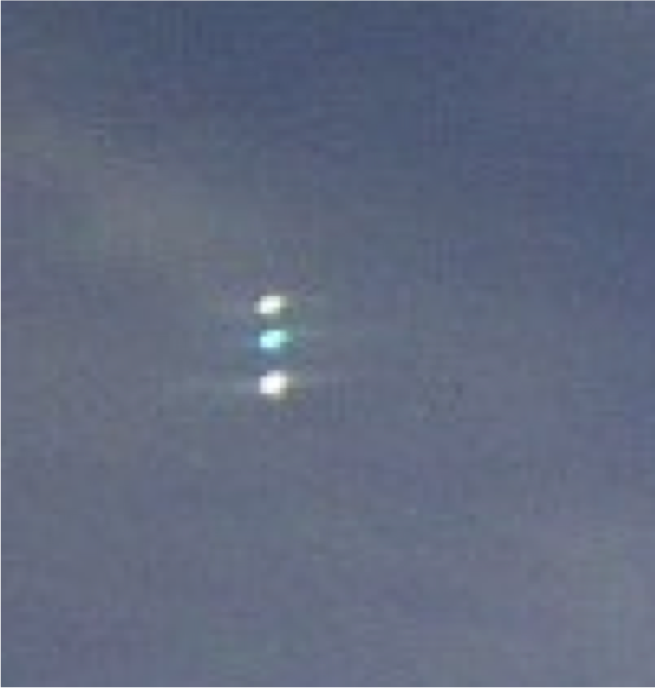
Case 12-012 was also identified as dashboard lights reflected in the window.
Precipitation
Precipitation is most often confused for something anomalous when seen on a game camera recording. Many of these cameras us infrared illuminators and so snow or rain falling near the camera will be brightly lit. Because the precipitation is moving, it will create a streak on the image. The image shown below is from case 13-002.
SNow falling near a game camera in the video submitted in case 22-007 exhibited a similar phenomenon:
Reflections are responsible for many reports, even though they are not really flying objects at all. We’ve all seen lights that appeared to be outside a window, only to quickly discover that it is a reflection of a light inside. Sometimes reflections end up on photographs or videos and can be perplexing at first.
The most common type of reflection reported is the lens flare. Lens flares are caused by light from a bright source in the frame reflecting off the surfaces of the camera lens elements, so they are never seen in real time wit the naked eye. Lens flares typically appear as bright colored circles, although they may be other shapes. The color and size of the flares will depend on the lens coatings and lens design, and vary widely. Some lenses have many elements, so these reflections can be complex, but generally they will intercept the sensor in the plane defined by the line of sight and the line to the bright source.
Modern lenses have features that make them more resistant to flaring, but still you can get almost any lens to flare under the right conditions. Since most cell phones have relatively simple and cheap lenses, flares are still commonly observed in cell phone photos or videos.
To analyze a lens flare photo, make sure you have the original, uncropped image. Identify the bright source (street lights, flood lights, the moon, etc.) and then draw a line from the center of the source to the center of the flare. the line should pass through the center of image. Note that the flare is not necessarily the same color or shape as the light source. In the illustration below, we see a “flying saucer” lens flare and a bright street lamp in the uncropped image. The line between the source and flare passes right through the center of the frame.
Case 13-049 was a very common sort of lens flare, often reported as an “orb”:



Case 22-016 was Identified as multiple lens flares. Here is the case summary video:
In addition to lens flares, reflections are sometimes seen and photographed in windows or windshields. We still get these reports occasionally. The image below is from Case 13-056, and was identified as windshield reflections:

Case 12-012 was also identified as dashboard lights reflected in the window.
Precipitation
Precipitation is most often confused for something anomalous when seen on a game camera recording. Many of these cameras us infrared illuminators and so snow or rain falling near the camera will be brightly lit. Because the precipitation is moving, it will create a streak on the image. The image shown below is from case 13-002.
SNow falling near a game camera in the video submitted in case 22-007 exhibited a similar phenomenon:
Dust Orbs
Dust orbs are a photographic anomaly. They are seen when using strobes or flash to illuminate the scene, and so these photos are most commonly taken at night or some other low light situation. The orbs are the results of small specks of dust very close to the camera – and hence completely out of focus – being brightly illuminated by the strobe. Because they are not in focus, the specks appear much larger and more spherical than they actually are.

An example of dust orbs.
Rockets
It depends strongly on the lighting conditions and the location of the observer, but at times rocket launches can put on a spectacular display and even stimulate UFO reports. This is easy to verify, since the time and location of launches is known.
Case 21-039 from Essen, Germany was identified as the reentry burn for a Centaur upper stage. Here is the witness submitted video:
Case 20-043 (Virginia) was identified as an Atlas V launch from Cape Canaveral.
Geese
Geese do fly at night, and under the right lighting conditions their v-shaped formations can appear to be something else entirely. Fortunately, they can also make quite a lot of noise as they pass overhead. Here’s a video of a flock of geese over Ireland shot with a night vision monocular:
Aircraft and Quadcopter Lights
Most of us are familiar with the standard lighting that commercial aircraft exhibit at night. The lights you will see depend on which direction the aircraft is facing with respect to the observer, and which lights are on. You will normally be able to see the aircraft’s anti-collision strobe light, which flashes once per second. At lower altitudes, most aircraft will turn on their front landing lights, which are very bright and can be seen from a long distance away. Since the landing lights are highly directional, you are unlikely to see them unless the aircraft is moving towards you.
Case 23-010 was identified as a landing light very close to the horizon:
We should note that military aircraft may exhibit different lighting patterns, depending on where they are operating and what their mission is. Video submitted in 21-031 shows the lights from a US military tanker aircraft which is moving from right to left across the observer’s line of sight and exhibits 3 red lights:
Aircraft light identification is complicated if the light or lights are out of focus. Case 22-040 is an example of one such case. In the video we see an disk shape or orb exhibiting concentric rings, which are symptomatic of an out of focus point source. If the image were in focus, it would appear much more point like.
Case 22-022 (Washington State) was also identified as an aircraft. Hereis the witness submitted video for that case:
Drone lights can vary widely in number, color, and brightness. In the USA, FAA requirements are only for a single anti-collision strobe light when operating at night or in twilight conditions, and some drone operators do not comply even with this. Drone lights are sometimes very bright, but more often are dim to conserve energy. In addition, drones are typically not very loud and can’t be heard from a distance unless the ambient noise is low.
There is no tracking app to identify drones, but the FAAs B4UFly app can identify zones where drone flying is illegal. It should be noted that quadcopters flying in restricted airspace without the required waivers is not unheard of.
This video from Case 21-002 (Glendora, California) is consistent with a drone with bright light which at times is facing the observer. At one point in the video, it looks as if it’s starting to land.
Satellites
Satellites are generally seen in the early evening or early morning, and the hours are increased in summer. Satellites are visible because they are illuminated by the sun, which can still be visible in orbit when it is dark on the ground.The satellite will appear as a point of light, ranging from very bright (the Space Station, for example), to almost imperceptibly dim. Satellites should move slowly across the sky on a smooth path, and will not exhibit abrupt maneuvers. It is rare that a satellite flashes or flares, but this can happen under the right circumstances, and for some classes of satellite the flares are predictable. When the satellite is close to the horizon, it may appear to twinkle or scintillate because the light reflected by the satellite is passing through the Earth’s atmosphere.
When a satellite approaches the Earth’s shadow, it first enters the penumbra, in which the Earth only partially blocks the sun. The flight through the penumbra only takes a few seconds, and then the satellite enters the umbra of the Earth’s shadow, and is no longer visible from the ground. Just before entering the umbra, the satellite may exhibit a reddish color. This video shows that effect with the international space station:
There are several smartphone apps available that can help you identify satellites in real time. For Android, we recommend heavens-above, and there are several other choices as well. Orbitrack is popular on the iPhone, and is also available for Android.
Starlink launches (or other multiple satellite launches) result in a group of many satellites slowly separating from each other along their orbit plane. This results in a “string of pearls” phenomenon which is often reported as a UFO, although these reports have become less frequent as more people are aware of Starlink.
We have had a number of cases that were identified as satellites. Some examples are:
- The object observed in 12-042 was identified as an Iridium satellite.
- Case 12-052 was identified as a rocket body.
- Case 12-059 was identified as a rocket body.
- Case 17-024 was identified as the International Space Station (ISS)
- Case 20-008 was identified as a constellation of Starlink satellites. We have several other similar reports – usually shortly after a launch when the satellites are still close together in the sky.
- Case 22-061 was identified as the ISS.
We were sent a wide angle video of a Starlink train seen in New Zealand in August 2023:
Stars and Planets
Stars and planets are frequently reported as UFOs, and are some of the easiest objects to identify, since we know exactly where they are in the sky. They can be quite bright, and can appear to pulsate, move, and change color when seen close to the horizon. A well known perceptual illusion known as the autokinetic effect can make planets or stars appear to move when they are stared at. We have many reports in our files that were identified as stars or planets.
This oval orange object shot from an airliner was the moon just coming up over the horizon:
Case 12-100 from New York state was identified as the planet Venus.
Case 18-020 was closed as the planet Venus.
Case 18-003 was identified as a star or planet.
Case 21-038 was identified as the planet Jupiter.
Case 23-008 was identified as a star.
Meteors
We do occasionally get reports of meteors (aka shooting stars), which are bits of rock that hit the Earth’s atmosphere at very high speeds. These typically move across the sky quickly and can be very bright for a short duration. On a clear night, most bright meteors will be the subject of multiple observations that can in some cases number in the hundreds. Some meteors have a very distinct color such as orange or green, and others are more white. Re-entering space debris can look much like a meteor, but is generally moving a bit slower.
it should be noted that the direction a meteor is moving in can be a bit deceptive, since it can be moving very fast toward or away from the observer as well as moving across the line of sight. For example, a meteor may appear to be moving downward toward the ground, when actually it is moving away from the observer.
The object reported in Case 23-001 was caught on a camera, and was identified as a meteor. It left an interesting residual trail that indicates the meteor was moving more or less toward the observer.
Case 14-044 was identified as a meteor
Case 16-034 was Identified as a meteor.
Case 19-010 was identified as a meteor.
Case 22-054 was identified as a meteor
If you think you might have seen a meteor or re-entering space debris, note the time as exactly as possible, then please check with the American Meteor Society. They keep logs of fireballs and you can find out if your observation was one of their fireball observations. they frequently have videos of meteors and re-entering space debris that have been submitted to them.
Objects out of focus
When a pinpoint source of light like a satellite or star is photographed out of focus, it will take on the shape of the aperture of the camera. Most often, this is manifested as concentric circles, and is often mistaken for a disk-like object.
Objects Reported both Night and Day
Lens Flares and Other Reflections
Reflections are responsible for many reports, even though they are not really flying objects at all. We’ve all seen lights that appeared to be outside a window, only to quickly discover that it is a reflection of a light inside. Sometimes reflections end up on photographs or videos and can be perplexing at first.
The most common type of reflection reported is the lens flare. Lens flares are caused by light from a bright source in the frame reflecting off the surfaces of the camera lens elements, so they are never seen in real time wit the naked eye. Lens flares typically appear as bright colored circles, although they may be other shapes. The color and size of the flares will depend on the lens coatings and lens design, and vary widely. Some lenses have many elements, so these reflections can be complex, but generally they will intercept the sensor in the plane defined by the line of sight and the line to the bright source.
Modern lenses have features that make them more resistant to flaring, but still you can get almost any lens to flare under the right conditions. Since most cell phones have relatively simple and cheap lenses, flares are still commonly observed in cell phone photos or videos.
To analyze a lens flare photo, make sure you have the original, uncropped image. Identify the bright source (street lights, flood lights, the moon, etc.) and then draw a line from the center of the source to the center of the flare. the line should pass through the center of image. Note that the flare is not necessarily the same color or shape as the light source. In the illustration below, we see a “flying saucer” lens flare and a bright street lamp in the uncropped image. The line between the source and flare passes right through the center of the frame.
Case 13-049 was a very common sort of lens flare, often reported as an “orb”:



Case 22-016 was Identified as multiple lens flares. Here is the case summary video:
In addition to lens flares, reflections are sometimes seen and photographed in windows or windshields. We still get these reports occasionally. The image below is from Case 13-056, and was identified as windshield reflections:

Case 12-012 was also identified as dashboard lights reflected in the window.
Precipitation
Precipitation is most often confused for something anomalous when seen on a game camera recording. Many of these cameras us infrared illuminators and so snow or rain falling near the camera will be brightly lit. Because the precipitation is moving, it will create a streak on the image. The image shown below is from case 13-002.
SNow falling near a game camera in the video submitted in case 22-007 exhibited a similar phenomenon:







